Smart Grouping for Salesforce Files
.svg)
Table of Contents
Salesforce Files: The Missing Grouping
Salesforce does many things well, but file organization isn’t one of them. Native Salesforce shows files in flat lists—whether in the Files tab or a record’s related list—without any way to:
- Group by file type, date, or name
- Organize by related record or object
- Navigate files across multiple objects
- Place files in folders or hierarchies
Finding the right file often means scrolling endlessly, applying repetitive filters, or even exporting data just to get clarity.
Media Manager’s Smart Grouping eliminates these inefficiencies by letting you organize Salesforce files in ways Salesforce itself simply can’t.
Group by File Attributes
In Salesforce, every file—PDF, image, video, or document—sits in the same long list. This creates friction for teams that handle large volumes of uploads.
With Smart Grouping, files can be clustered by:
- File Type – Keep PDFs, images, videos, and documents in separate sections
- Last Modified Date – Surface the most recent files instantly
- File Name or Title – Organize alphabetically for quick scanning
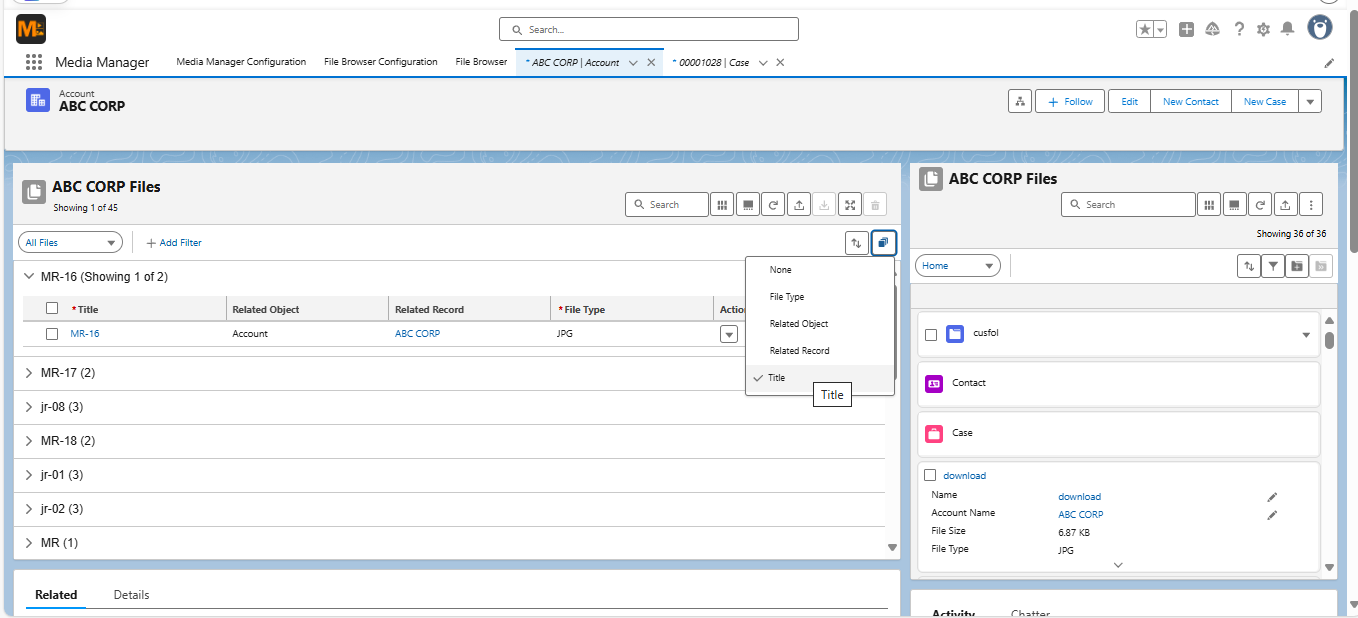
Instead of endless scrolling, teams see logical, visual groupings that speed up navigation. For marketing teams reviewing campaign creatives, trainers sorting course materials, or legal teams managing contracts, grouping by file attributes cuts the time to find a file by up to 70%.
Group by Related Record
Salesforce links files to records but doesn’t display them in a record‑centric view. That means when you’re working with multiple Cases, Projects, or Opportunities, files from different records can easily blur together.
Smart Grouping fixes this by displaying every file under the record it belongs to—Case #10421, Opportunity Q4‑Deals, Project Alpha—so context is always clear.
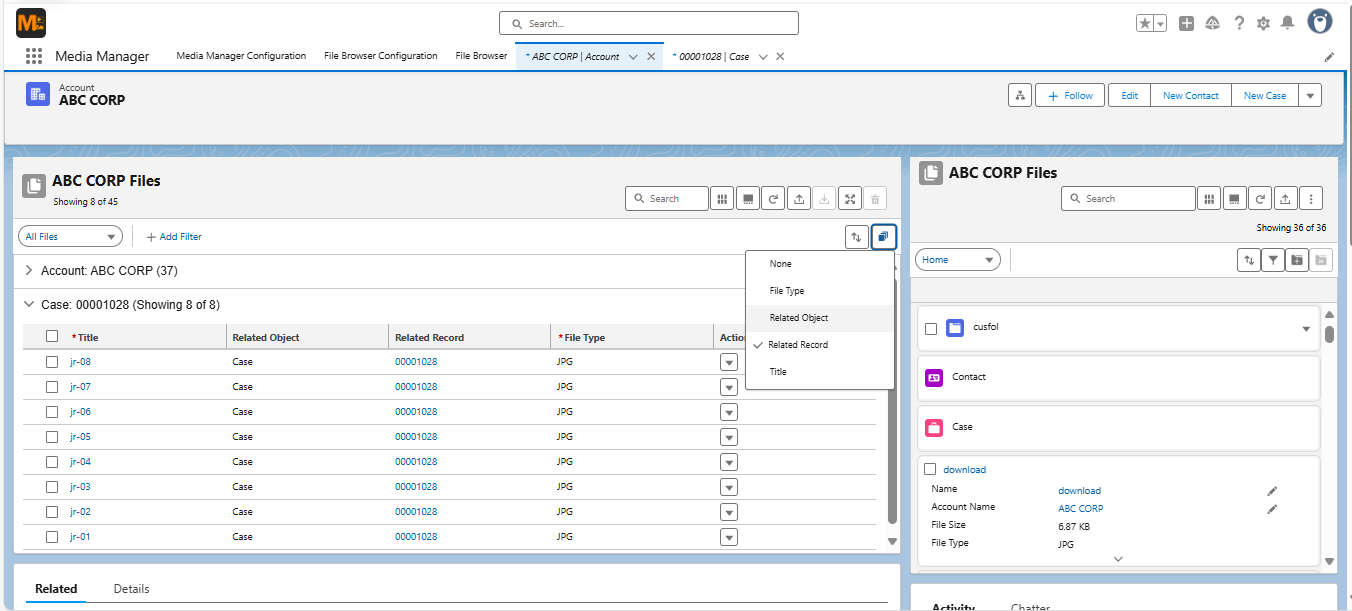
This is a game‑changer for:
- Support teams resolving cases without digging through unrelated files
- Account managers reviewing all documents tied to a single client
- Project leads tracking deliverables in complex, multi‑file projects
When files are grouped by their exact record, there’s no guesswork and no misplaced documents.
Group by Salesforce Objects
Sometimes you don’t just need to see files for one record—you need a big‑picture view across an entire Salesforce object.
Smart Grouping can cluster files by their parent object, such as Accounts, Opportunities, Campaigns, or custom objects. This allows:
- Auditing documentation across all Opportunities
- Checking which Campaigns are missing creative assets
- Reviewing file coverage across custom project objects
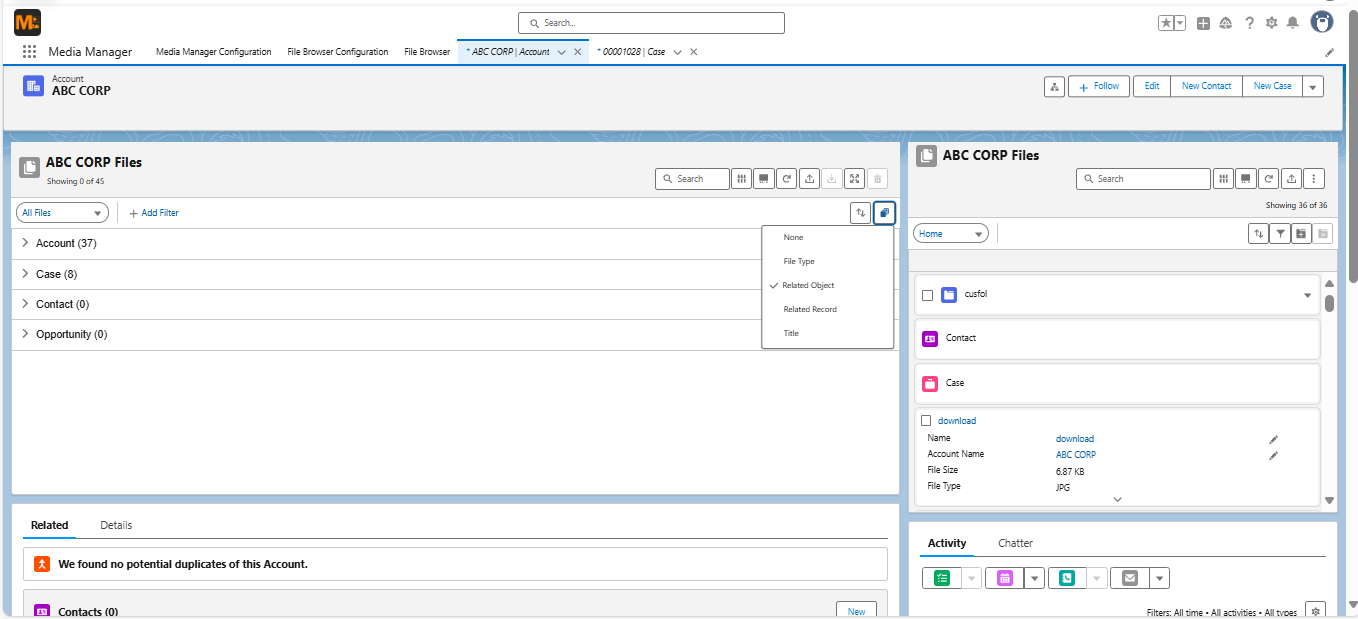
Admins and managers can instantly spot gaps, validate compliance, and compare coverage without running complex Salesforce reports. It’s the kind of strategic visibility native Salesforce doesn’t offer.
Group by its Related Objects
For organizations with multi‑level record relationships, native Salesforce makes file access painfully slow—you have to open each record to see its files.
Smart Grouping with Related Object works alongside Media Manager’s File Tree to display files across connected records in one view. For example:
- Account → Opportunities → Cases hierarchy
- All related files, organized by the object they belong to
- No switching between records or losing context
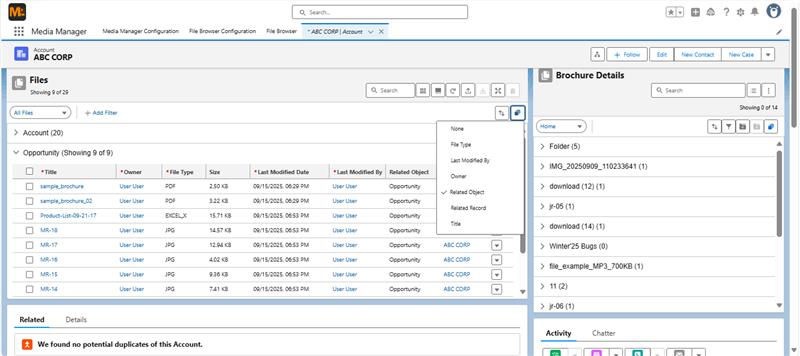
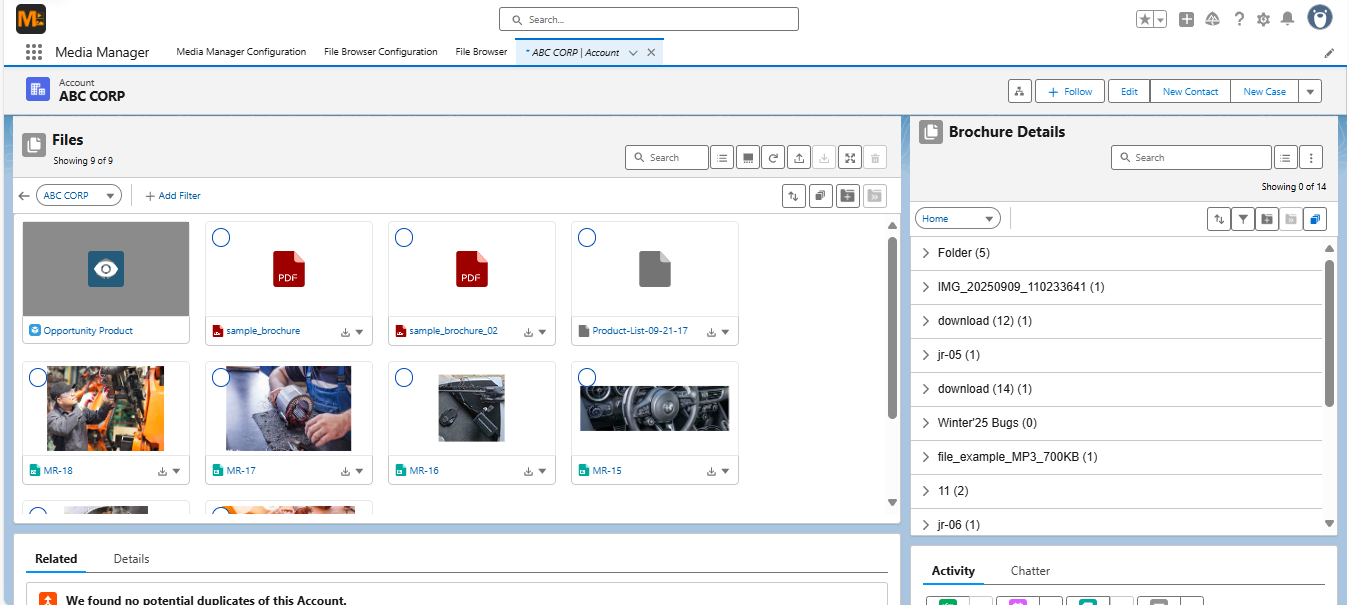
Operations teams, service managers, and field teams can see the full scope of files across related objects, making it easier to manage accounts and deliver services without missing critical information.
Group by Folders
Salesforce doesn’t offer true folder‑based file organization, but Media Manager brings it in two ways:
- Custom Folders – Create per‑record folders for projects, clients, or campaigns
- Hierarchical Folder View – Navigate nested folders like a traditional file explorer, complete with drag‑and‑drop and bulk folder actions

Custom folders help project teams and account managers keep content organized their way, while hierarchical folders let you mirror your business structure directly inside Salesforce. Combined with Group By, folders give users a familiar, intuitive way to manage files—especially in media‑heavy workflows.
Refine Grouping with Filters & Sort
Grouping is powerful on its own, but when paired with filters and sorting, it becomes an advanced file discovery tool.
- Filter by file type, date, object, or related record
- Sort by last modified date, name, or custom fields
- Combine grouping + filters + sort for precision views
.jpg)
Example: Group by Related Object → Filter PDFs → Sort by Last Modified Date.
The result is a laser‑focused file view that perfectly matches your workflow, whether you’re preparing for a client meeting, auditing compliance, or assembling campaign materials.
Key Compatibility Tips
To get the most out of Smart Grouping, keep these best practices in mind:
- Not supported in Slider View (only List and Tile views)
- Grouping disabled when File Source = Both
- Avoid combining Folder View with Group by Related Record or Object
- Enable “Allow Group By” per column for it to activate
View Flexibility, Your Way
Smart Grouping works with:
- List View – Ideal for metadata-rich, collapsible row formats
- Tile View – Great for image-heavy or visual-first browsing
Your team can switch views without losing the benefits of grouping—whether they need quick visuals or detailed lists.
Turn Chaos into Organized Control
With Smart Grouping, Media Manager turns Salesforce from a flat file repository into an organized, role‑ready workspace.
Instead of wasting time hunting for documents, your team sees exactly what they need, in the format and structure that makes sense for their role—whether it’s by type, record, object, related object, or folder.
From chaos to organized control, Smart Grouping gives Salesforce users clarity, speed, and confidence every time they work with files.





